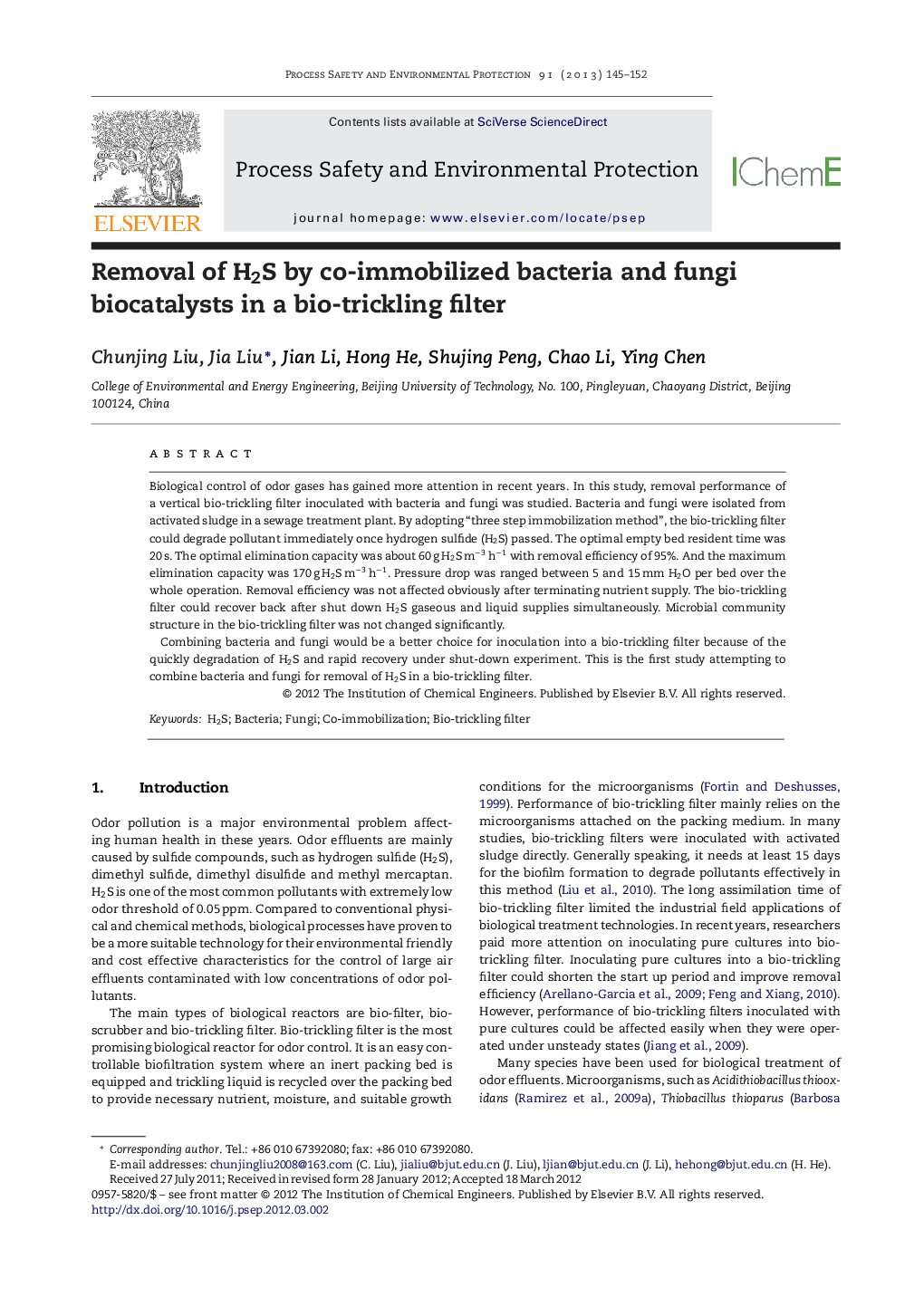| Article ID | Journal | Published Year | Pages | File Type |
|---|---|---|---|---|
| 588243 | Process Safety and Environmental Protection | 2013 | 8 Pages |
Biological control of odor gases has gained more attention in recent years. In this study, removal performance of a vertical bio-trickling filter inoculated with bacteria and fungi was studied. Bacteria and fungi were isolated from activated sludge in a sewage treatment plant. By adopting “three step immobilization method”, the bio-trickling filter could degrade pollutant immediately once hydrogen sulfide (H2S) passed. The optimal empty bed resident time was 20 s. The optimal elimination capacity was about 60 g H2S m−3 h−1 with removal efficiency of 95%. And the maximum elimination capacity was 170 g H2S m−3 h−1. Pressure drop was ranged between 5 and 15 mm H2O per bed over the whole operation. Removal efficiency was not affected obviously after terminating nutrient supply. The bio-trickling filter could recover back after shut down H2S gaseous and liquid supplies simultaneously. Microbial community structure in the bio-trickling filter was not changed significantly.Combining bacteria and fungi would be a better choice for inoculation into a bio-trickling filter because of the quickly degradation of H2S and rapid recovery under shut-down experiment. This is the first study attempting to combine bacteria and fungi for removal of H2S in a bio-trickling filter.
► Bacteria and fungi mixed cultures as inoculation microorganisms for H2S removal. ► Three step immobilization method increase quantity of microorganisms on packings. ► Bacteria and fungi trickling filter start to degrade H2S quickly. ► Bacteria and fungi trickling filter robust enough after shut down experiment.
